
Sampling from DDPM Gradient Correction Step
(a)
(b)
<latexit sha1_base64="djekvXwSB4KF96lKAP+DK3bGNPE=">AAACKHicbVDLSgMxFM34rPU16tJNsAh1YZmRou4sunFZwT6gM5ZMmrahmQfJHbGM8zlu/BU3Iop065eYabuorQdCDufcy733eJHgCixrZCwtr6yurec28ptb2zu75t5+XYWxpKxGQxHKpkcUEzxgNeAgWDOSjPieYA1vcJP5jUcmFQ+DexhGzPVJL+BdTgloqW1eRe3E8ULRUUNff4kDfQYkTXFxVn1KHxI4tdPnORFO2mbBKllj4EViT0kBTVFtmx9OJ6SxzwKggijVsq0I3IRI4FSwNO/EikWEDkiPtTQNiM+Um4wPTfGxVjq4G0r9AsBjdbYjIb7KttOVPoG+mvcy8T+vFUP30k14EMXAAjoZ1I0FhhBnqeEOl4yCGGpCqOR6V0z7RBIKOtu8DsGeP3mR1M9K9nmpfFcuVK6nceTQITpCRWSjC1RBt6iKaoiiF/SGPtGX8Wq8G9/GaFK6ZEx7DtAfGD+/wL2o2w==</latexit>
p✓(xt1|xt)
<latexit sha1_base64="l8Wg57QcOytsWBnhoPm4+YtElIw=">AAACFHicbVC7TsMwFHV4lvIKMLJYVEhFiCpBFTBWsDAWiT6kNlSO47RWnTjYDqIK+QgWfoWFAYRYGdj4G5w2A7QcyfLROffq3nvciFGpLOvbmJtfWFxaLqwUV9fWNzbNre2m5LHApIE546LtIkkYDUlDUcVIOxIEBS4jLXd4kfmtOyIk5eG1GkXECVA/pD7FSGmpZx7ewnLX5cyTo0B/yX16k6j0YUY6stODnlmyKtYYcJbYOSmBHPWe+dX1OI4DEirMkJQd24qUkyChKGYkLXZjSSKEh6hPOpqGKCDSScZHpXBfKx70udAvVHCs/u5IUCCzDXVlgNRATnuZ+J/XiZV/5iQ0jGJFQjwZ5McMKg6zhKBHBcGKjTRBWFC9K8QDJBBWOseiDsGePnmWNI8r9kmlelUt1c7zOApgF+yBMrDBKaiBS1AHDYDBI3gGr+DNeDJejHfjY1I6Z+Q9O+APjM8fdiafuA==</latexit>
q(xt|xt1)
<latexit sha1_base64="fzqb1Y5SKrSwzxR/FGaFMv9VtJg=">AAAB+3icbVA7T8MwGHTKq5RXKCOLRYXEVCWoAsYKFsYi9SW1oXIcp7Xq2JHtoFZR/goLAwix8kfY+Dc4bQZoOcny6e775PP5MaNKO863VdrY3NreKe9W9vYPDo/s42pXiURi0sGCCdn3kSKMctLRVDPSjyVBkc9Iz5/e5X7viUhFBW/reUy8CI05DSlG2kgjuzr0BQvUPDJXOsse03Y2smtO3VkArhO3IDVQoDWyv4aBwElEuMYMKTVwnVh7KZKaYkayyjBRJEZ4isZkYChHEVFeusiewXOjBDAU0hyu4UL9vZGiSOXxzGSE9EStern4nzdIdHjjpZTHiSYcLx8KEwa1gHkRMKCSYM3mhiAsqckK8QRJhLWpq2JKcFe/vE66l3X3qt54aNSat0UdZXAKzsAFcME1aIJ70AIdgMEMPINX8GZl1ov1bn0sR0tWsXMC/sD6/AECpJUV</latexit>
xT
<latexit sha1_base64="9TU5CewLwBjzAlknZAPI5rhafSc=">AAAB+XicbVC7TsMwFHXKq5RXgJElokJiqhJUAWMFC2OR6ENqQ+U4TmvVsSP7pqKK+icsDCDEyp+w8Tc4bQZoOZLlo3PulY9PkHCmwXW/rdLa+sbmVnm7srO7t39gHx61tUwVoS0iuVTdAGvKmaAtYMBpN1EUxwGnnWB8m/udCVWaSfEA04T6MR4KFjGCwUgD2+4Hkod6Gpsre5o9wsCuujV3DmeVeAWpogLNgf3VDyVJYyqAcKx1z3MT8DOsgBFOZ5V+qmmCyRgPac9QgWOq/WyefOacGSV0IqnMEeDM1d8bGY51Hs5MxhhGetnLxf+8XgrRtZ8xkaRABVk8FKXcAenkNTghU5QAnxqCiWImq0NGWGECpqyKKcFb/vIqaV/UvMta/b5ebdwUdZTRCTpF58hDV6iB7lATtRBBE/SMXtGblVkv1rv1sRgtWcXOMfoD6/MHYtaUKQ==</latexit>
<latexit sha1_base64="bnexyB06YATzwx3W416sbFLxmAM=">AAAB/XicbVA7T8MwGHR4lvIKj43FokJioUpQBYwVLIxFog+pDZXjOK1Vx45sB1GiiL/CwgBCrPwPNv4NTpsBWk6yfLr7Pvl8fsyo0o7zbS0sLi2vrJbWyusbm1vb9s5uS4lEYtLEggnZ8ZEijHLS1FQz0oklQZHPSNsfXeV++55IRQW/1eOYeBEacBpSjLSR+vZ+zxcsUOPIXOlDdpfqEzfr2xWn6kwA54lbkAoo0OjbX71A4CQiXGOGlOq6Tqy9FElNMSNZuZcoEiM8QgPSNZSjiCgvnaTP4JFRAhgKaQ7XcKL+3khRpPKAZjJCeqhmvVz8z+smOrzwUsrjRBOOpw+FCYNawLwKGFBJsGZjQxCW1GSFeIgkwtoUVjYluLNfniet06p7Vq3d1Cr1y6KOEjgAh+AYuOAc1ME1aIAmwOARPINX8GY9WS/Wu/UxHV2wip098AfW5w8bQpWn</latexit>
xt1
<latexit sha1_base64="TDssSHqCtWaSdPrQ5sbdOP5pA20=">AAAB+3icbVC7TsMwFL0pr1JeoYwsFhUSU5UgBIwVLIxFog+pDZXjuK1Vx4lsB7WK8issDCDEyo+w8Tc4bQZoOZLlo3PulY+PH3OmtON8W6W19Y3NrfJ2ZWd3b//APqy2VZRIQlsk4pHs+lhRzgRtaaY57caS4tDntONPbnO/80SlYpF40LOYeiEeCTZkBGsjDexq3494oGahudJp9pg62cCuOXVnDrRK3ILUoEBzYH/1g4gkIRWacKxUz3Vi7aVYakY4zSr9RNEYkwke0Z6hAodUeek8e4ZOjRKgYSTNERrN1d8bKQ5VHs9MhliP1bKXi/95vUQPr72UiTjRVJDFQ8OEIx2hvAgUMEmJ5jNDMJHMZEVkjCUm2tRVMSW4y19eJe3zuntZv7i/qDVuijrKcAwncAYuXEED7qAJLSAwhWd4hTcrs16sd+tjMVqyip0j+APr8wfL4ZTx</latexit>
x0
<latexit sha1_base64="N8lJ15xdhd49rQrl0eK8zfGrnVI=">AAACQnicbVDLTgIxFO3gC/GFunTTSExwIZkxRF0S3bjERB6GAdIpBRo6j7R3jDjOt7nxC9z5AW5caIxbFxaYBQInaXpyzj3p7XECwRWY5puRWlpeWV1Lr2c2Nre2d7K7e1Xlh5KyCvWFL+sOUUxwj1WAg2D1QDLiOoLVnMHVyK/dM6m4793CMGBNl/Q83uWUgJba2Tvb8UVHDV19RY9xK4ITK8a24i4O2tG0aUOfAYljnF8UeZoWH+IWHLezObNgjoHniZWQHEpQbmdf7Y5PQ5d5QAVRqmGZATQjIoFTweKMHSoWEDogPdbQ1CMuU81oXEGMj7TSwV1f6uMBHqvTiYi4arSdnnQJ9NWsNxIXeY0QuhfNiHtBCMyjk4e6ocDg41GfuMMloyCGmhAqud4V0z6RhIJuPaNLsGa/PE+qpwXrrFC8KeZKl0kdaXSADlEeWegcldA1KqMKougZvaNP9GW8GB/Gt/EzGU0ZSWYf/YPx+wfZeLPz</latexit>
zt1⇠p✓(zt1|xt)
<latexit sha1_base64="bnexyB06YATzwx3W416sbFLxmAM=">AAAB/XicbVA7T8MwGHR4lvIKj43FokJioUpQBYwVLIxFog+pDZXjOK1Vx45sB1GiiL/CwgBCrPwPNv4NTpsBWk6yfLr7Pvl8fsyo0o7zbS0sLi2vrJbWyusbm1vb9s5uS4lEYtLEggnZ8ZEijHLS1FQz0oklQZHPSNsfXeV++55IRQW/1eOYeBEacBpSjLSR+vZ+zxcsUOPIXOlDdpfqEzfr2xWn6kwA54lbkAoo0OjbX71A4CQiXGOGlOq6Tqy9FElNMSNZuZcoEiM8QgPSNZSjiCgvnaTP4JFRAhgKaQ7XcKL+3khRpPKAZjJCeqhmvVz8z+smOrzwUsrjRBOOpw+FCYNawLwKGFBJsGZjQxCW1GSFeIgkwtoUVjYluLNfniet06p7Vq3d1Cr1y6KOEjgAh+AYuOAc1ME1aIAmwOARPINX8GY9WS/Wu/UxHV2wip098AfW5w8bQpWn</latexit>
xt1
<latexit sha1_base64="9TU5CewLwBjzAlknZAPI5rhafSc=">AAAB+XicbVC7TsMwFHXKq5RXgJElokJiqhJUAWMFC2OR6ENqQ+U4TmvVsSP7pqKK+icsDCDEyp+w8Tc4bQZoOZLlo3PulY9PkHCmwXW/rdLa+sbmVnm7srO7t39gHx61tUwVoS0iuVTdAGvKmaAtYMBpN1EUxwGnnWB8m/udCVWaSfEA04T6MR4KFjGCwUgD2+4Hkod6Gpsre5o9wsCuujV3DmeVeAWpogLNgf3VDyVJYyqAcKx1z3MT8DOsgBFOZ5V+qmmCyRgPac9QgWOq/WyefOacGSV0IqnMEeDM1d8bGY51Hs5MxhhGetnLxf+8XgrRtZ8xkaRABVk8FKXcAenkNTghU5QAnxqCiWImq0NGWGECpqyKKcFb/vIqaV/UvMta/b5ebdwUdZTRCTpF58hDV6iB7lATtRBBE/SMXtGblVkv1rv1sRgtWcXOMfoD6/MHYtaUKQ==</latexit>
<latexit sha1_base64="fzqb1Y5SKrSwzxR/FGaFMv9VtJg=">AAAB+3icbVA7T8MwGHTKq5RXKCOLRYXEVCWoAsYKFsYi9SW1oXIcp7Xq2JHtoFZR/goLAwix8kfY+Dc4bQZoOcny6e775PP5MaNKO863VdrY3NreKe9W9vYPDo/s42pXiURi0sGCCdn3kSKMctLRVDPSjyVBkc9Iz5/e5X7viUhFBW/reUy8CI05DSlG2kgjuzr0BQvUPDJXOsse03Y2smtO3VkArhO3IDVQoDWyv4aBwElEuMYMKTVwnVh7KZKaYkayyjBRJEZ4isZkYChHEVFeusiewXOjBDAU0hyu4UL9vZGiSOXxzGSE9EStern4nzdIdHjjpZTHiSYcLx8KEwa1gHkRMKCSYM3mhiAsqckK8QRJhLWpq2JKcFe/vE66l3X3qt54aNSat0UdZXAKzsAFcME1aIJ70AIdgMEMPINX8GZl1ov1bn0sR0tWsXMC/sD6/AECpJUV</latexit>
xT
<latexit sha1_base64="TDssSHqCtWaSdPrQ5sbdOP5pA20=">AAAB+3icbVC7TsMwFL0pr1JeoYwsFhUSU5UgBIwVLIxFog+pDZXjuK1Vx4lsB7WK8issDCDEyo+w8Tc4bQZoOZLlo3PulY+PH3OmtON8W6W19Y3NrfJ2ZWd3b//APqy2VZRIQlsk4pHs+lhRzgRtaaY57caS4tDntONPbnO/80SlYpF40LOYeiEeCTZkBGsjDexq3494oGahudJp9pg62cCuOXVnDrRK3ILUoEBzYH/1g4gkIRWacKxUz3Vi7aVYakY4zSr9RNEYkwke0Z6hAodUeek8e4ZOjRKgYSTNERrN1d8bKQ5VHs9MhliP1bKXi/95vUQPr72UiTjRVJDFQ8OEIx2hvAgUMEmJ5jNDMJHMZEVkjCUm2tRVMSW4y19eJe3zuntZv7i/qDVuijrKcAwncAYuXEED7qAJLSAwhWd4hTcrs16sd+tjMVqyip0j+APr8wfL4ZTx</latexit>
x0
<latexit sha1_base64="6WlTOjfogAPwHvVN3ADDp1Kodfo=">AAACJ3icbVDLSgMxFM34rPU16tJNsAh10TIjRV1J0Y3LCvYBnVrupGkbmswMSUaoQ//Gjb/iRlARXfonZtoutO2FkMM553LvPX7EmdKO820tLa+srq1nNrKbW9s7u/befk2FsSS0SkIeyoYPinIW0KpmmtNGJCkIn9O6P7hO9foDlYqFwZ0eRrQloBewLiOgDdW2Lz0/5B01FOZLHkf3iS64I1zAXg+EAOxFIDUDjnv5RcaTtp1zis648DxwpyCHplVp229eJySxoIEmHJRquk6kW0k6hXA6ynqxohGQAfRo08AABFWtZHznCB8bpoO7oTQv0HjM/u1IQKh0Q+MUoPtqVkvJRVoz1t2LVsKCKNY0IJNB3ZhjHeI0NNxhkhLNhwYAkczsikkfJBBtos2aENzZk+dB7bTonhVLt6Vc+WoaRwYdoiOURy46R2V0gyqoigh6Qi/oHX1Yz9ar9Wl9TaxL1rTnAP0r6+cX1MKmhw==</latexit>
zt1@g(zt1)
Figure 1: (a) Illustration of the denoising diffusion probabilistic model (DDPM) Markov chain that
relates the distribution of high-quality images with that of the Gaussian noise. (b) DOLPH uses a
pre-trained DDPM for recovering images from amplitude measurements. DOLPH can be viewed as a
modified reverse diffusion process that has a gradient correction step to ensure consistency with the
measured amplitudes.
is also worth noting the connection between use of diffusion models in inverse problems and the
plug-and-play priors (PnP) framework, which also uses image denoisers as image priors [19–21].
In this work, we present
d
iffusion m
o
de
l
s for
ph
ase retrieval (DOLPH) as a new method for using
diffusion models as image priors for solving PR problems of form
(1)
. DOLPH combines the
sampling procedure in diffusion models with the data-consistency updates ensuring that the predicted
amplitudes match the measured ones in
y
. Our numerical results on phase retrieval from coded
diffraction patters (CDP) [22] show that DOLPH can generate realistic looking images from severely
noisy measurements, where the traditional approaches lead to overly smooth images.
2 Proposed Method
DOLPH builds on the sampling process of diffusion models to make it applicable to the problem
in eq.
(1)
. The sampling process uses a denoising convolutional neural network (CNN) pre-
trained using the denoising diffusion probabilistic models (DDPM) framework [13, 15]. DOLPH then
uses the pre-trained CNN denoiser to generate samples consistent with a given set of amplitude
measurements.
2.1 Denoising diffusion probabilistic models
As illustrated in Figure 1(a), DDPM consists of two Markov processes: the fixed forward process and
the learning-based reverse process. The forward process consists of
T≥1
steps, where each step
adds a Gaussian noise with a pre-designated variance, so that the at step
T
the statistical distribution
of data corresponds to the standard Gaussian distribution. Each step of the forward process can be
expressed as
q(xt|xt−1):=N(xt;p1−βtxt−1, βtI),(2)
where
N(x;µ,Σ)
denotes a Gaussian probability density function with the mean vector
µ
and the
covariance matrix
Σ
. The vectors
x1,··· ,xT
are the latent variables that have the same dimensions
2
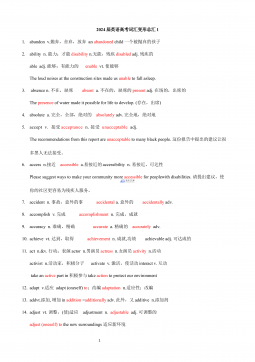
 2024-12-06 4
2024-12-06 4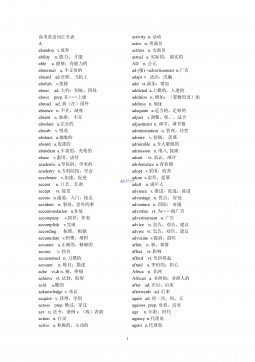
 2024-12-06 11
2024-12-06 11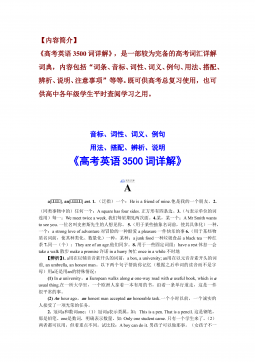
 2024-12-06 29
2024-12-06 29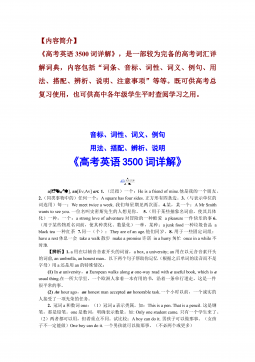
 2024-12-06 26
2024-12-06 26
 2024-12-06 29
2024-12-06 29
 2024-12-06 11
2024-12-06 11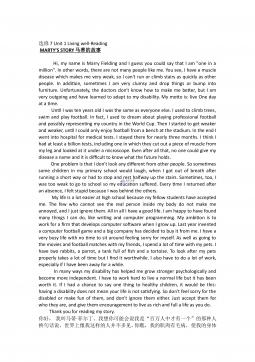
 2024-12-06 35
2024-12-06 35
 2024-12-06 12
2024-12-06 12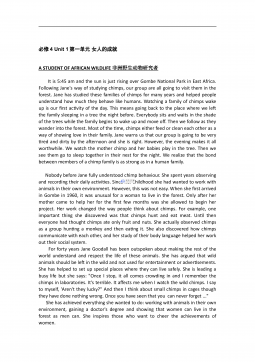
 2024-12-06 39
2024-12-06 39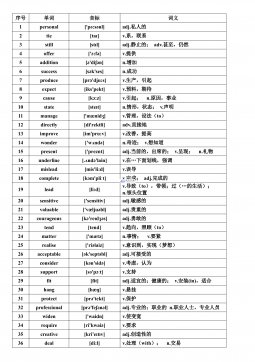
 2024-12-06 27
2024-12-06 27






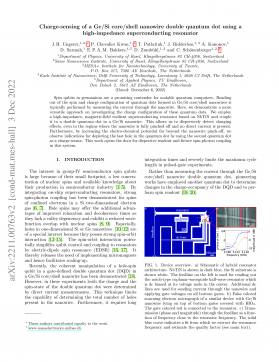

 渝公网安备50010702506394
渝公网安备50010702506394
